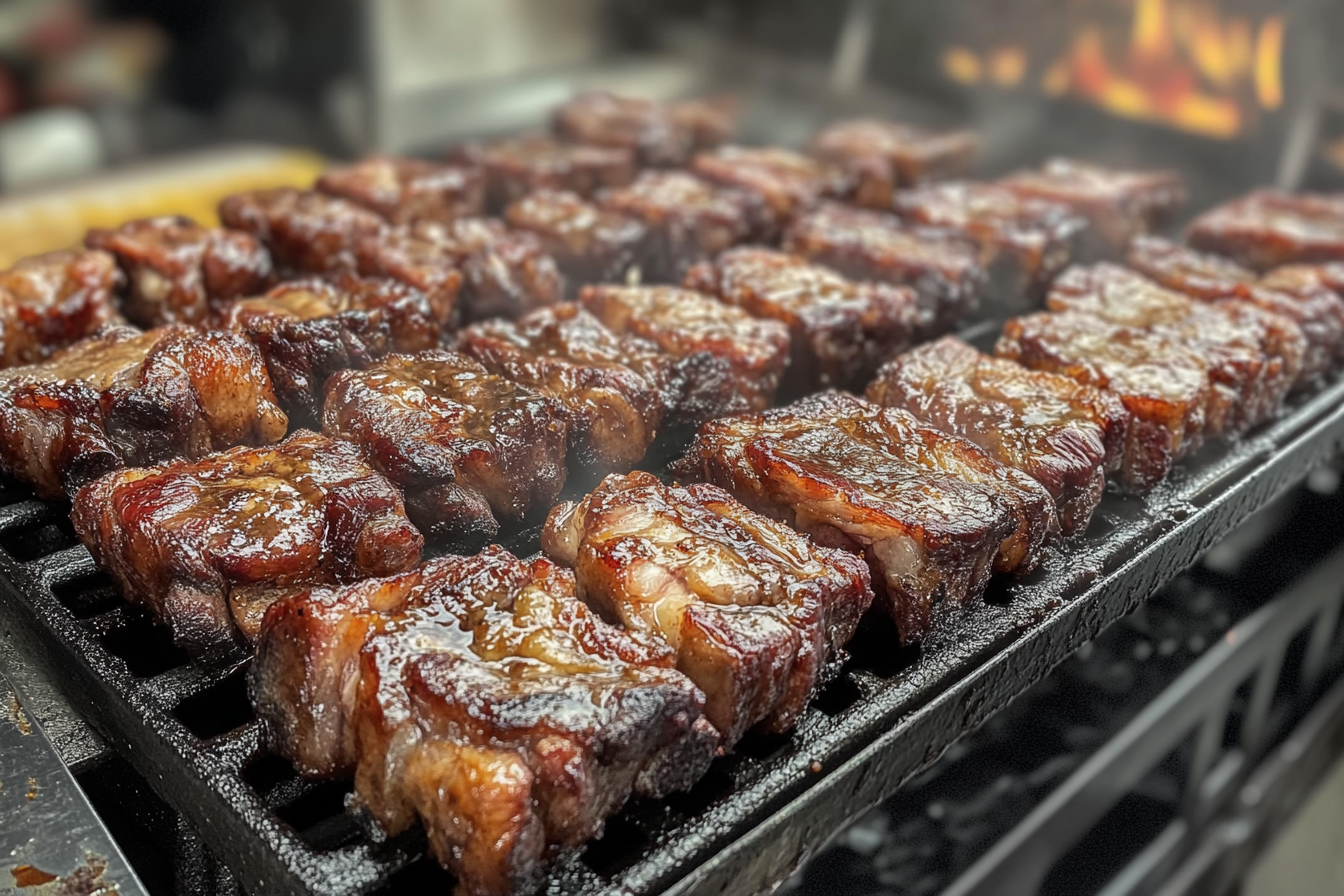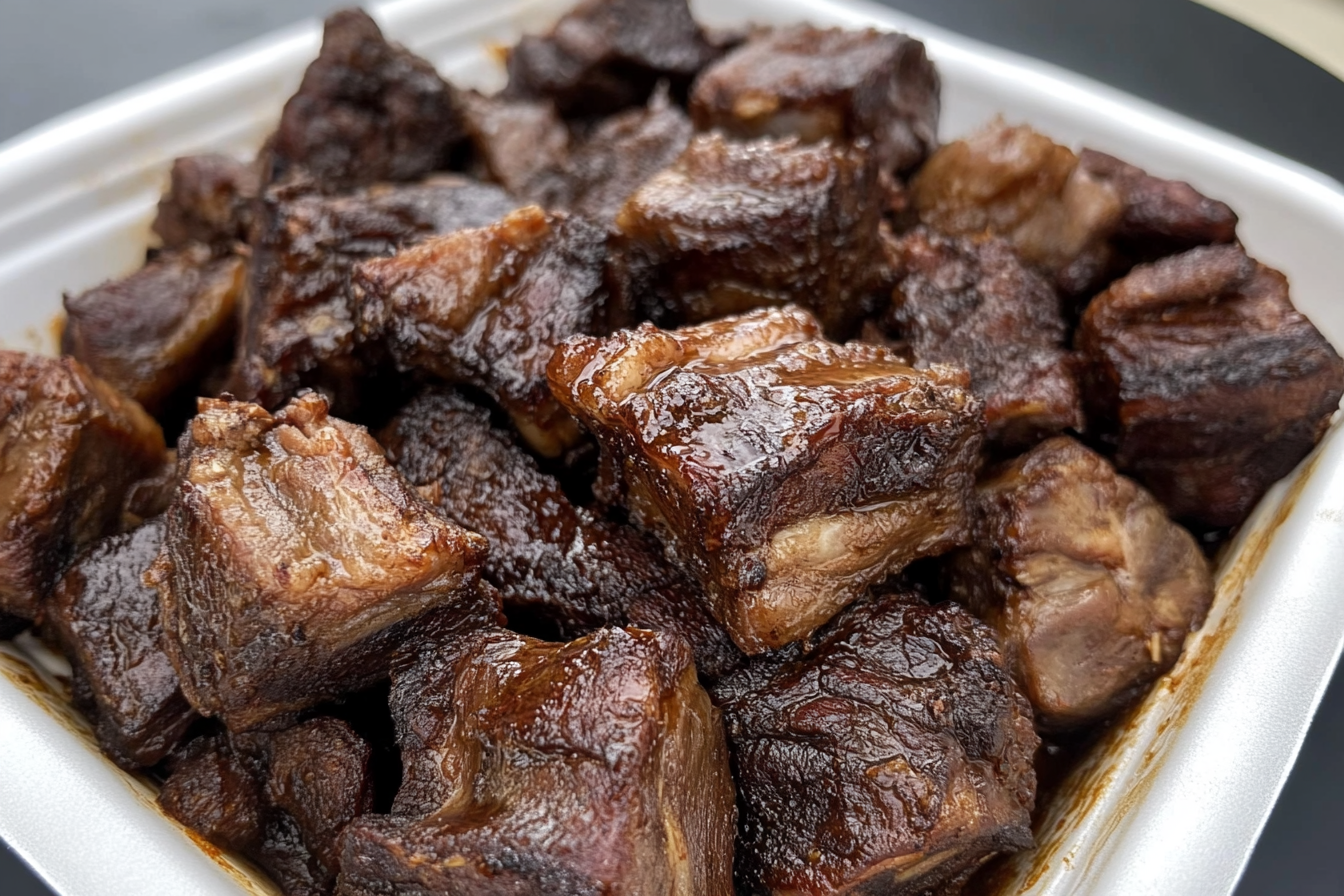How to cook oxtails has become a popular question as this once humble and overlooked cut of meat has transformed into a prized ingredient in modern cuisine. Known for their rich, gelatinous texture and hearty flavor, oxtails have long been a staple in traditional recipes across various cultures. Whether you’re making a comforting stew or exploring international dishes, knowing how to cook oxtails provides depth and richness that is hard to beat.
In this comprehensive guide, we will explore everything about oxtails, from what they are, their culinary rise, how to select and prepare them, to the most popular cooking methods. We’ll also provide delicious oxtail recipes from around the world, answer frequently asked questions, and offer tips for reheating and storing them.
What Are Oxtails?
Oxtails, as the name suggests, come from the tail of cattle, typically used in beef or veal dishes. Contrary to popular belief, they are no longer exclusively from oxen but are sourced from all types of cattle. The cut consists of bone, fat, and a small amount of gelatin-rich meat. When cooked, the bone marrow and connective tissue release a rich flavor that permeates stews, soups, and broths.
Historically, people considered oxtails a less desirable cut because of the labor required to prepare them. However, in recent years, they’ve experienced a renaissance, especially in gourmet and home kitchens, where cooks appreciate slow cooking and deep, hearty flavors.
Why Learning How to Cook Oxtails Has Gained Popularity
Once considered an affordable cut of meat, oxtails have surged in popularity due to their rich flavor, versatility in cooking, and growing recognition of their nutritional benefits. More chefs and home cooks are discovering the culinary magic that occurs when oxtails are cooked slowly over long periods. The result is tender, succulent meat that absorbs the flavors of whatever spices or broths it’s cooked with, making it a standout addition to any meal.
Nutritional Benefits of Oxtails
Nutritional benefits are another major factor contributing to the rise in popularity of oxtails. They are rich in protein, collagen, and gelatin, which are excellent for promoting joint health, improving skin elasticity, and supporting bone density. These benefits make oxtails more than just a tasty addition to your meal; they also contribute to overall well-being.
Key Nutritional Components of Oxtails:
- Protein: Oxtails provide high-quality protein essential for muscle repair and overall body function.
- Gelatin: Aids in digestion and gut health.
- Collagen: Supports healthy joints, skin, hair, and nails.
- Calcium: Essential for bone strength.
- Iron: Helps in maintaining energy levels and supporting a healthy immune system.
If you want to dig deeper into the specific nutritional breakdown of oxtails and how they compare to other cuts of meat, you can find more information from Acabonac Farms.
How to Cook Oxtails: The Culinary Rise and Popularity
As oxtail dishes have risen in popularity, they have found a home in a wide variety of cuisines worldwide. From the hearty Caribbean stews that simmer for hours to Italian ragù dishes that enrich pasta, oxtails offer a deeply satisfying taste experience. In gourmet kitchens, chefs value the gelatin and marrow that oxtails provide when cooked slowly, which leads to a luxurious texture and flavor in their dishes.
Why Oxtails Have Become Expensive
The increase in demand for oxtails has driven prices up significantly. Once considered a less desirable cut of meat, they’ve now become a sought-after ingredient in high-end restaurants and specialty home cooking. There are several reasons for this price increase, some of which include:
- Limited Supply: Each cow has only one tail, which limits the availability of oxtails compared to other cuts of meat.
- Labor-Intensive Cooking: Preparing oxtails requires slow, low-heat cooking, which adds to the labor cost for restaurants.
- Growing Popularity: The surge in popularity in cuisines around the world, from Jamaican to Korean, has created a higher demand for oxtails.
For those looking to experiment with other premium cuts, exploring alternatives like a brisket sandwich could offer a similarly slow-cooked, flavorful experience.
How to Select and Prepare Oxtails for Cooking
When buying oxtails, it is essential to know what to look for in quality cuts. Oxtails can vary in size depending on whether they come from larger cattle or smaller veal. Fresh, high-quality oxtails should have a deep red color and a good amount of meat surrounding the bone. You want to look for cuts with a higher meat-to-bone ratio for the best cooking results.
Tips for Selecting Oxtails:
- Fresh vs. Frozen: While fresh oxtails are ideal, frozen ones are also an excellent option, especially if you’re planning to slow-cook them for extended periods.
- Fat Content: Trim excess fat before cooking, but don’t remove all of it, as it adds to the flavor and richness of the final dish.
- Size Matters: Larger oxtails take longer to cook, but they yield more meat, making them ideal for stews.
Preparing Oxtails for Cooking
Before cooking, oxtails require a bit of preparation. Here’s a step-by-step guide to ensure your oxtails are ready for the pot:
Step 1: Clean and Trim
Rinse the oxtails under cold water to remove any bone fragments or excess fat. Pat them dry with a paper towel. If there’s too much fat around the oxtail, trim it carefully, but leave some to enhance the richness of the dish.
Step 2: Season and Marinate
Season the oxtails generously with spices like garlic powder, thyme, paprika, and salt. For added depth of flavor, consider marinating the oxtails in a mixture of soy sauce, Worcestershire sauce, or your favorite spice blend for a few hours or overnight.
Step 3: Sear
Before slow-cooking, it’s crucial to sear the oxtails on all sides in a hot pan with a bit of oil. This step locks in flavor and creates a beautiful caramelized crust that enhances the dish.
By following these preparation steps, you’ll set yourself up for success when cooking oxtails. You can explore other premium cuts and preparation tips, like learning how to cook a tomahawk steak, to expand your cooking knowledge.
Popular Methods: How to Cook Oxtails
Cooking oxtails requires time and patience, as the connective tissues need to break down slowly to achieve that fall-apart tenderness. Here are the most popular methods for cooking oxtails:
1. Braising
Braising is a slow-cooking method that involves browning the oxtails in a hot pan and then simmering them in a flavorful liquid, such as broth or wine, for several hours. This method produces tender, succulent oxtail with rich gravy.
Steps for Braising Oxtails:
- Sear the oxtails in a hot pan until browned on all sides.
- Remove the oxtails and add aromatics like onions, garlic, and celery to the pan.
- Deglaze the pan with red wine or broth, then add the oxtails back in.
- Simmer over low heat for 2-4 hours until the meat is tender and falls off the bone.
2. Stewing
In stewing, oxtails are submerged in liquid and simmered for a long time until tender. The slow simmering process helps extract the gelatin and flavor from the bones, creating a thick, hearty stew.
Popular around the world, Jamaican Oxtail Stew is a spicy, flavorful dish made with allspice, Scotch bonnet peppers, and thyme. The stew is usually served with rice and peas, making it a complete, satisfying meal.
3. Pressure Cooking
Pressure cooking is a great way to reduce the time it takes to cook oxtails. This method traps steam in a sealed environment, speeding up the tenderizing process. You can have tender oxtails in just 1 to 1.5 hours using a pressure cooker, as opposed to the 3-4 hours required for braising.
Regional Oxtail Dishes from Around the World
Oxtails are featured in many international cuisines, each with its own spin on this rich and hearty cut of meat. Here are some of the most famous oxtail dishes from around the world:
1. Jamaican Oxtail Stew
This Caribbean dish combines oxtails with spices like allspice, thyme, and Scotch bonnet peppers to create a deeply flavorful and spicy stew. The stew is slow-cooked until the meat is tender and falling off the bone, often served with rice and peas for a complete meal.
2. Korean Oxtail Soup (Kkori Gomtang)
Kkori Gomtang is a light, clear broth made by simmering oxtails for several hours, typically seasoned with just salt and green onions. This simple yet nourishing soup is known for its clean, rich flavor and is often served with a side of kimchi and rice.
3. Italian Oxtail Ragù
This Italian classic involves slow-cooking oxtails in a rich tomato-based sauce that’s served over pasta. The long cooking time allows the oxtail meat to become tender and flavorful, infusing the sauce with a hearty beef flavor.
4. French Oxtail Pot-au-Feu
This traditional French dish features oxtails simmered in broth with root vegetables like carrots and leeks. The result is a comforting, rustic stew that highlights the natural flavors of the meat and vegetables.
5. American Oxtail Chili
A unique twist on classic chili, oxtail chili uses the rich flavors of slow-cooked oxtails to add depth to the dish. The oxtail meat is simmered with tomatoes, beans, and spices, resulting in a hearty, filling meal.
Looking for a specific recipe to start with? Try this NYT Cooking guide on wine-braised oxtails, a simple yet flavorful dish that highlights the richness of oxtails.
Frequently Asked Questions (FAQs)
What animal does oxtail come from?
Oxtail comes from the tail of cattle, which includes both beef and veal.
Is oxtail good for health?
Yes! Oxtails are rich in collagen, gelatin, and protein, which support joint health, improve skin elasticity, and promote muscle growth.
Why is oxtail so expensive?
Oxtail is expensive due to its increasing demand, limited supply (only one tail per cow), and the labor-intensive cooking process needed to make it tender.
How do I know when oxtail is cooked?
Oxtail is done when it is fall-apart tender, and the meat easily separates from the bone.
What does oxtail taste like?
Oxtail has a rich, beefy flavor with a slightly gelatinous texture due to the collagen in the bones.
Storing and Reheating: How to Cook Oxtails for Later
How to Store Cooked Oxtails
Cooked oxtails can be stored in an airtight container in the refrigerator for up to 3 days. If you want to store them for longer, you can freeze cooked oxtails for up to 3 months. Be sure to allow them to cool before placing them in the freezer.
How to Reheat Oxtails After Cooking
When reheating oxtails, it’s best to use low and slow methods to preserve their tenderness. Reheat in a covered pot on the stove or in the oven at low heat. Avoid microwaving, as it can dry out the meat and make it less tender.
Conclusion
Whether you’re preparing a hearty oxtail stew or exploring international cuisines, learning how to cook oxtails provides a rich, flavorful, and deeply satisfying experience. Cooking oxtails requires time and patience, but the results are well worth the effort. The nutritional benefits and versatility of oxtails make understanding how to cook oxtails a valuable skill for any home cook’s repertoire.
For more inspiration on premium cuts and gourmet recipes, check out these creative birthday cake ideas from Eira Recipes, or if you’re craving something savory, try their guide on the perfect brisket sandwich.



